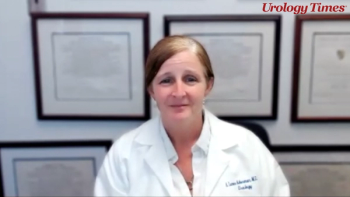
The status and future direction of advanced urine testing: multiplex PCR

"Given that PCR testing may have a benefit for specific cohorts, it is recommended that more clinical evidence be provided to better guide Medicare in defining 'medical necessity,' ” write Stephanie Gleicher, MD, MPH, and Roger R. Dmochowski MD, MMHC, FACS.
More than half of adult women in the United States will have at least 1 urinary tract infection (UTI) with an estimated annual cost burden of $1.6 billion.1 Among these women, 25% to 50% will develop recurrent UTI (rUTI), which is defined as at least 2 infections in a 6-month period or at least 3 in 1 year.2,3 The gold standard for UTI diagnosis is urinalysis and standard urine culture (SUC), where a positive result is defined as 105 colony forming units (CFU).4 Yet SUC has many shortcomings, including a false negative rate of 20% to 30% among symptomatic subjects.5,6 SUC with final speciation and antibiotic susceptibility testing (AST) can take up to 3 to 5 days, and this
does not include assessment for fastidious, anaerobic, and fungal biota, which requires additional time and cost.7-9 Lastly, it is established that a urinary microbiome exist.10,11 This adds significant complexity to balancing the under- and overdiagnosis of UTI, but it also aids in better understanding the polymicrobial nature of UTI, pathologic microbiomes, and the creation of facultative resistant biofilms.11-15 For these reasons, newer technologies, such as polymerase chain reaction (PCR) testing, have been developed to aid in the diagnosis of UTI.
PCR testing involves the amplification and then detection of targeted DNA sequences from microorganisms at low concentrations.8 Multiplex PCR (M-PCR) allows for the identification of numerous DNA sequences at the same time.8 PCR testing is utilized in numerous clinical settings, including sexually transmitted diseases, respiratory illness, and gastrointestinal infections, using both FDA-approved and laboratory developed tests (LDTs).8 LDTs are in-vitro tests offered by a single laboratory that are not regulated by the FDA.16 More recently, PCR testing was expanded to UTI, where utilization is growing with different LDTs. Commercially available products exist that identify urine pathogens and screen for antibiotic resistance genes, including SolarisDx’s UTI ID Panel, Genetworx’s UTI Molecular PCR Test, and Pathnostics’ Guidance UTI. All include phenotypic results for AST, whereas some offer more sophisticated pooled-AST (P-AST) (Pathnostics; Guidance UTI).17-19 Within 24 to 48 hours, patients will have a diagnosis, antibiotic resistance information, and AST. In comparative studies, M-PCR outperforms SUC with polymicrobial speciation and detection of specific gram-positive bacteria (ie, mycobacteria and aerococcus).20 Uropathogen detection among symptomatic women appears to be higher, with 96% PCR positive vs 81% SUC positive.5 Among women who ordered the home detection PCR tests, there are high satisfaction rates, with 86% of participants opting for this modality again.21
There are slight nuances to each product, which might lead to choosing 1 over another. Pathnostics' Guidance UTI tests for 30 organisms and 32 antibiotic resistance genes with 6 antibiotic classes. It also offers the unique P-AST, a phenotypic AST test that also assesses the influence of polymicrobial interactions on drug resistance.17,22 Nearly 39% of UTIs are polymicrobial and drug resistance increases with higher speciation.20,22 SolarisDx’s UTI ID Panel tests for 16 pathogens and provides resistance gene information with PCR, then performs antibiotic resistance testing with AST.18 It implements reflex testing with PCR results for urinalyses suggestive of UTI, followed by AST results. Patients can expect to receive speciation and antibiotic resistance data by 5 PM the day of drop-off and AST results the next day. Genetworx’s UTI Molecular PCR tests detects 20 pathogens and 22 antibiotic resistance genes. It guarantees results (including AST) within 1 to 2 days of specimen drop-off. Interestingly, it also advertises a swab-based, “brief collection” technique for incontinent subjects who cannot provide a specimen easily.19PCR panels should target uropathogens, yet contamination with nonviable genetic material may occur and give false results. Additionally, although antibiotic resistance genes can provide useful information, they have only a 60% concordance with phenotypic P-AST.23 This may be due to the limitations of DNA-based testing and the inability to detect mutations associated with gene expression or conferred resistance secondary to polymicrobial interactions. Among the 40% discordant samples, 25% were positive for antibiotic-resistant genes and 15% were negative for antibiotic-resistant genes.
The indications for advanced testing remain undefined and current utilization patterns are unknown. Current guidelines raise concern for overtreatment with antibiotics and limited evidence.4 Per the Medicare MolDx program, molecular UTI panel testing is indicated for a “patient being symptomatic and at higher risk for UTI complications (ie, the elderly, patients with recurrent symptomatic UTIs and/or complicated urinary tract anatomy) and/or is seen in urogynecology or urology specialty care settings.”24 To be eligible for coverage, Medicare clearly states that subjects must meet all criteria in the respective Local Coverage Determination for the testing jurisdiction.24 A recent report in Urology Times® addressed the challenges in reimbursement for discrepancies in “medical necessity” between specialists and the Centers for Medicare & Medicaid Services (CMS).25
For providers who regularly manage women with rUTI or complicated UTI, the utility of advanced testing is better defined. Women with rUTIs that continue to recur despite optimized prevention and treatment regimens, individuals with SUC-negative results despite significant symptomatology, women with drug-resistant UTIs, and subjects with complex UTIs who are susceptible to hospitalization would all benefit from PCR testing. For the cohort of women with a false-negative SUC, advanced testing may play a critical role. Although agreement between PCR and SUC for positive results is 90%, PCR identified an additional 22% of uropathogens as well as polymicrobial UTIs.20 Although promising, research studies have not shown an association between PCR results alone and improved outcomes. Published clinical evidence suggests a combination of PCR with P-AST may allow for more informed, rapid, and directed treatments that could improve patient outcomes.26 More outcomes research is needed in this domain.
Moving forward, specialists should keep advanced testing in mind for appropriate patients per CMS-defined criteria for Medicare beneficiaries. Given that PCR testing may have a benefit for specific cohorts, it is recommended that more clinical evidence be provided to better guide Medicare in defining “medical necessity.” Beyond Medicare, we might even expect guideline changes and possibly FDA approvals.
References
1. Medina M, Castillo-Pino E. An introduction to the epidemiology and burden of urinary tract infections. Ther Adv Urol. 2019;11:1756287219832172. doi:10.1177/1756287219832172
2. Anger J, Lee U, Ackerman AL, et al. Recurrent uncomplicated urinary tract infections in women: AUA/CUA/SUFU guideline. J Urol. 2019;202(2)282-289. doi:10.1097/JU.0000000000000296
3. Geerlings SE. Clinical presentations and epidemiology of urinary tract infections. Microbiol Spectr. 2016;4(5): 10.1128/microbiolspec.UTI-0002-2012. doi:10.1128/microbiolspec.UTI-0002-2012
4. Anger JT, Bixler BR, Holmes RS, et al. Updates to recurrent uncomplicated urinary tract infections in women: AUA/CUA/SUFU guideline. J Urol. 2022; 208(3):536-541. doi:10.1097/JU.0000000000002860
5. Heytens S, De Sutter A, Coorevits L, et al. Women with symptoms of a urinary tract infection but a negative urine culture: PCR-based quantification of Escherichia coli suggests infection in most cases. Clin Microbiol Infect. 2017;23(9):647-652. doi:10.1016/j.cmi.2017.04.004
6. Naber KG, Schito G, Botto H, Palou J, Mazzei T. Surveillance study in Europe and Brazil on clinical aspects and Antimicrobial Resistance Epidemiology in Females with Cystitis (ARESC): implications for empiric therapy. Eur Urol. 2008;54(5):1164-1175. doi:10.1016/j.eururo.2008.05.010
7. Davenport M, Mach KE, Shortliffe LMD, Banaei N, Wang TH, Liao JC. New and developing diagnostic technologies for urinary tract infections. Nat Rev Urol. 2017;14(5):296-310. doi:10.1038/nrurol.2017.20
8. Yang S, Rothman RE. PCR-based diagnostics for infectious diseases: uses, limitations, and future applications in acute-care settings. Lancet Infect Dis. 2004;4(6):337-348. doi:10.1016/S1473-3099(04)01044-8
9. Xu R, Deebel N, Casals R, Dutta R, Mirzazadeh M. A new gold rush: a review of current and developing diagnostic tools for urinary tract infections. Diagnostics (Basel). 2021;11(3):479. doi:10.3390/diagnostics11030479
10. Hilt EE, McKinley K, Pearce MM, et al. Urine is not sterile: use of enhanced urine culture techniques to detect resident bacterial flora in the adult female bladder. J Clin Microbiol. 2014; 52(3):871-876. doi:10.1128/JCM.02876-13
11. Neugent ML, Hulyalkar NV, Nguyen VH, Zimmern PE, De Nisco NJ. Advances in understanding the human urinary microbiome and its potential role in urinary tract infection. mBio. 2020;11(2):e00218-20. doi:10.1128/mBio.00218-20
12. Dixon M, Sha S, Stefil M, McDonald M. Is it time to say goodbye to culture and sensitivity? The case for culture-independent urology. Urology. 2020;136:112-118. doi:10.1016/j.urology.2019.11.030
13. Hunstad DA, Justice SS. Intracellular lifestyles and immune evasion strategies of uropathogenic Escherichia coli. Annu Rev Microbio. 2010;64:203-221. doi:10.1146/annurev.micro.112408.134258
14. Pearce MM, Hilt EE, Rosenfeld AB, et al. The female urinary microbiome: a comparison of women with and without urgency urinary incontinence. mBio. 2014;5(4):e01283-14. doi:10.1128/mBio.01283-14
15. Mouraviev V, McDonald M. An implementation of next generation sequencing for prevention and diagnosis of urinary tract infection in urology. Can J Urol. 2018;25(3):9349-9356
16. Laboratory developed tests. FDA. Updated February 27, 2018. Accessed February 27, 2023.
17. Guidance UTI. Pathnostics. Accessed February 27, 2023.
18. Test panels. Solaris Diagnostics. Accessed February 27, 2023.
19. UTI molecular PCR tests. GENETWORx. Accessed February 27, 2023.
20. Wojno KJ, Baunoch D, Luke N, et al. Multiplex PCR based urinary tract infection (UTI) analysis compared to traditional urine culture in identifying significant pathogens in symptomatic patients. Urology. 2020;136:119-126. doi:10.1016/j.urology.2019.10.018
21. Melnyk AI, Toal C, Glass Clark S, Bradley M. Home urinary tract infection testing: patient experience and satisfaction with polymerase chain reaction kit. Int Urogynecol J. 2022;1-6. doi:10.1007/s00192-022-05309-z
22. Vollstedt A, Baunoch D, Wolfe A, et al. Bacterial interactions as detected by pooled antibiotic susceptibility testing (P-AST) in polymicrobial urine specimens. J Surg Urol. 2020;1:101
23. Baunoch D, Luke N, Wang D, et al. Concordance between antibiotic resistance genes and susceptibility in symptomatic urinary tract infections. Infect Drug Resist. 2021;14:3275-3286. doi:10.2147/IDR.S323095
24. MolDX: Molecular syndromic panels for infectious disease pathogen identification testing. Centers for Medicare & Medicaid Services. Updated May 19, 2022. Accessed February 27, 2023. https://www.cms.gov/medicare-coverage-database/view/lcd.aspx?lcdid=39001&ver=4
25. Rubenstein J, Painter M. How to get reimbursed for multiplex PCR urine cultures. Urology Times. November 8, 2022. Accessed February 27, 2023. http://bit.ly/3hmWmlh
26. Daly A, Baunoch D, Rehling K, et al. Utilization of M-PCR and P-AST for diagnosis and management of urinary tract infections in home-based primary care. JOJ Urology & Nephrology. 2020;7(2):555707. doi:10.19080/JOJUN.2020.07.555707
Newsletter
Stay current with the latest urology news and practice-changing insights — sign up now for the essential updates every urologist needs.


















